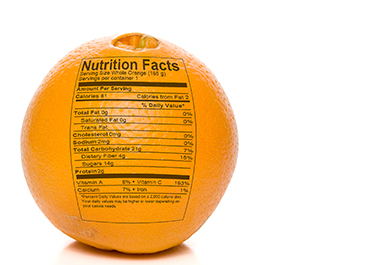GMO: Friend or Foe?
FOOD & DRINK / WRITTEN BY DAG FALCK

GMOs (genetically modified organisms) have grown into a controversial topic over the past few years. Many of us are trying to make heads or tails of the technology; with evidence supporting both ends of the spectrum, that’s not an easy feat. Some experts claim that GMOs have been thoroughly tested and found to be safe for consumption. Others say the opposite: GMOs have not been studied long enough and the effect on people and the environment is not entirely known. It is clear why consumers without science degrees would have difficulty concluding whether or not genetically modified foods are the right choice for them.
Traditional Farming
Centuries-old, traditional farming methods have involved selective breeding in food crops. Farmers choose the healthiest seeds from each crop and replant the specimens to help their crops evolve successfully—and naturally. The very first farmers used selective breeding as well as cross breeding methods with edible wild grasses. They hand selected the largest, healthiest edible seeds, with which they planted their own domestic crops. Year after year, the farmers continued to pick and replant specific seeds, cultivating successful crops that demonstrated favourable traits. Farmers would even allow different varietals of grasses to cross breed to see if specific combinations would produce stronger, healthier seeds.
Genetic Engineering
In 1996, the methods used to cultivate food shifted from the land to the laboratories, and the first herbicide-resistant GMO crops were commercially grown. Unlike natural plant breeding methods, GMO laboratory technology re-programs the genetic makeup of plants, creating entirely new species. Scientists use this technology to target certain characteristics in plants and manipulate the genes of the organism to either add or remove particular features. Genetic modification can also involve inserting the genetic material of one plant species into another.
The Pros and Cons
Since the introduction of the first genetically engineered crops 18 years ago, GMOs have become commonplace in grocery stores. The annual June Agricultural Survey compiled by the United States Department of Agriculture’s National Agricultural Statistics Service showed that between 2000 and 2011, 81 to 86 percent of all corn and 87 to 90 percent of all soybeans planted in the US were genetically modified crops. Today we are faced with the introduction of even more GMOs: genetically engineered alfalfa is now a reality, and an apple genetically engineered to be non-browning is in the pipeline.
Some of the experts who back GMOs have good intentions. Crops can be genetically engineered to survive and even thrive despite harsh weather conditions as well as disease and insect infestation. This could be a major pro for farmers in developing countries.
Yet, there are other experts who express concerns with using laboratory science to add elements to DNA. Sure, we can create crops resistant to certain herbicides and apples that don’t brown when they’re sliced, but how can we know for certain that other effects are not also created?
The Choice
Maybe after reading this article you will have made up your mind about GMOs. If not, and you are still not convinced that GMOs are for you, I encourage you to do two simple things: eat organic foods and purchase products labelled with the Non-GMO Project Verified seal. Organic regulations prohibit the use of genetic modification, so this is the best way to avoid foods that may have been genetically altered. As for the Non-GMO Project Verified seal, it is part of an initiative of the Non-GMO Project, North America’s only independent verification process specifically for products made according to best practices for GMO avoidance.
Agronomist, Dag Falck, is the Organic Program Manager for Nature’s Path and a director of the Non-GMO Project. For more information on the Non-GMO Project, visit www.nongmoproject.org.
